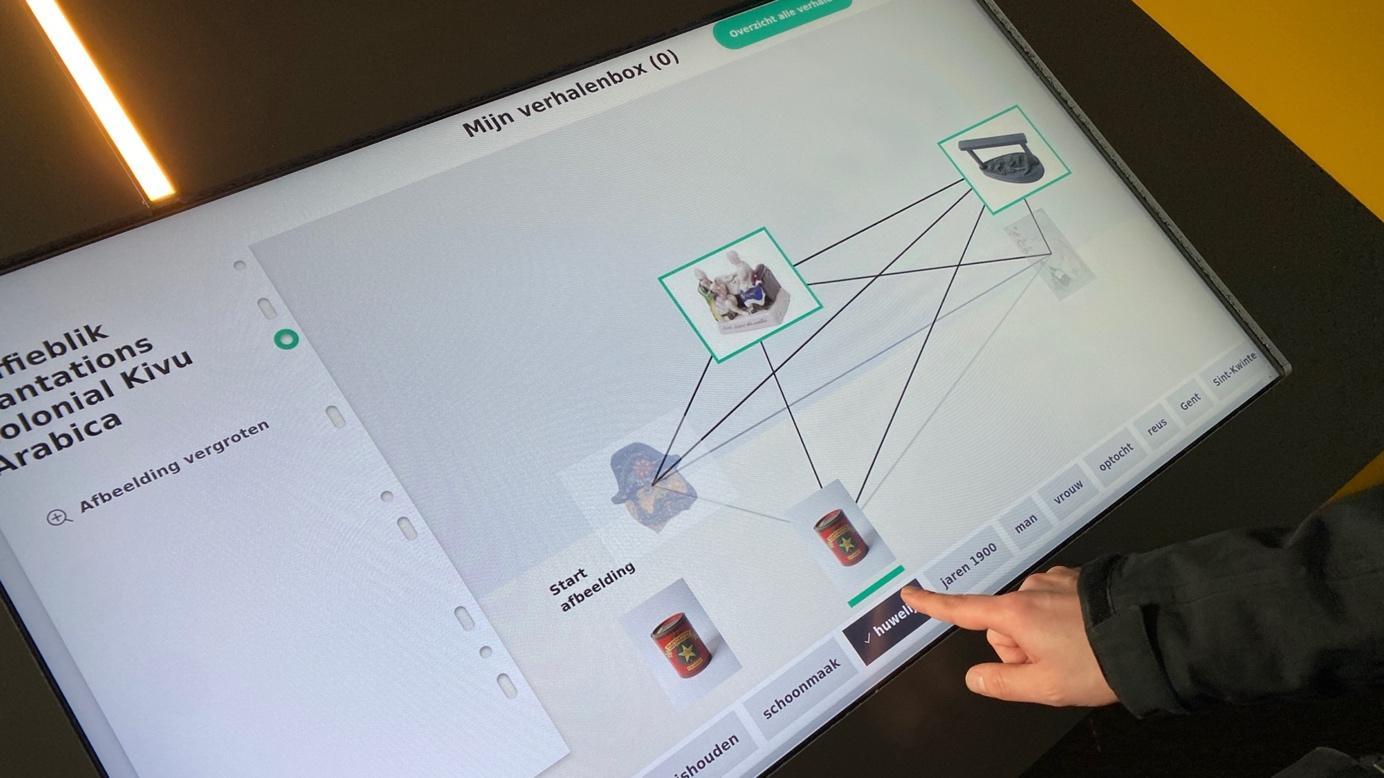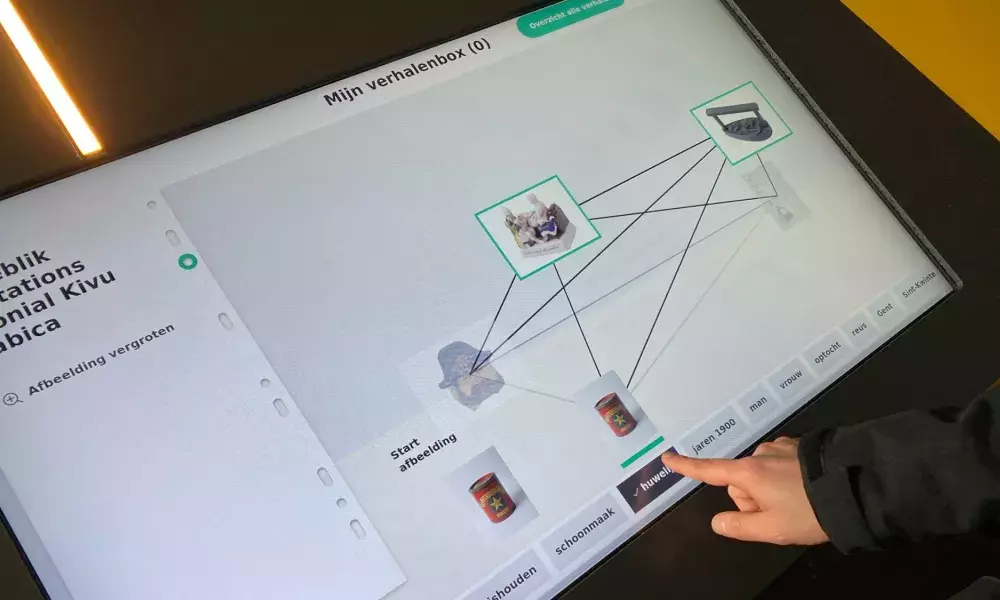
This article will zoom in on CoGhent’s co-creation process building on 2 conversations with 2 key partners of the project that observed and took part successively in the co-creation process within the partnership. First Pieter van Kerkhove who focussed more on the first co-creation that took place around the CoGhent Box:
“I’m Pieter van Kerkhove. I have a background in operational, project, portfolio and product management. I got a temporary assignment as project manager of Work package 7 of the CoGhent initiative: on one side, I was working with the teams developing the software for the web platform which is a back-end digital asset management system with 2 front-end applications, the interface where the institutions and the museums can explore and add digitised assets to the data management system and the interface for the citizens where they can explore the digitised collections. And on the other side, I was in charge of the transport of the Box across the neighbourhoods.
And then Sam Donvil, who focussed on the Co-creation Fund launched in the second part of the project:
“I'm Sam Donvil. I work for an organisation called meemoo, the Flemish Centre for the Archive. Amongst other things, we accompany pilot projects in the Flemish heritage sector, that explore new possibilities in digital heritage and then we disseminate this knowledge to the wider heritage sector. We were asked to be part of the CoGhent project because of our experience with opening up data. We have been grappling with the question on how, after opening up digital collections, you can also stimulate their reuse and this project has been a great opportunity to explore this over the course of three years instead of shorter ad-hoc projects. My role was in particular, to take the lead on the Co-creation Fund, a CoGhent initiated call for projects. I checked in with all the selected projects on a semi-regular basis to see if they needed help or contacts with new partners, if there were unforeseen problems, if they needed technical support … Furthermore, I try to ensure that the projects actually make use of the linked open data architecture which the CoGhent project built because the Co-creation Fund projects are intended to create use-cases for linked open data in cultural heritage”.
STRIVING FOR CO-CREATION AROUND THE BOX…
PkV - “When I was entering the team, I was looking at the project from an outside perspective and often wondered is the box mobile enough? Is the current design the most optimal: a closed box of 6 by 6 metres with two doors, especially considering Covid-19 times?
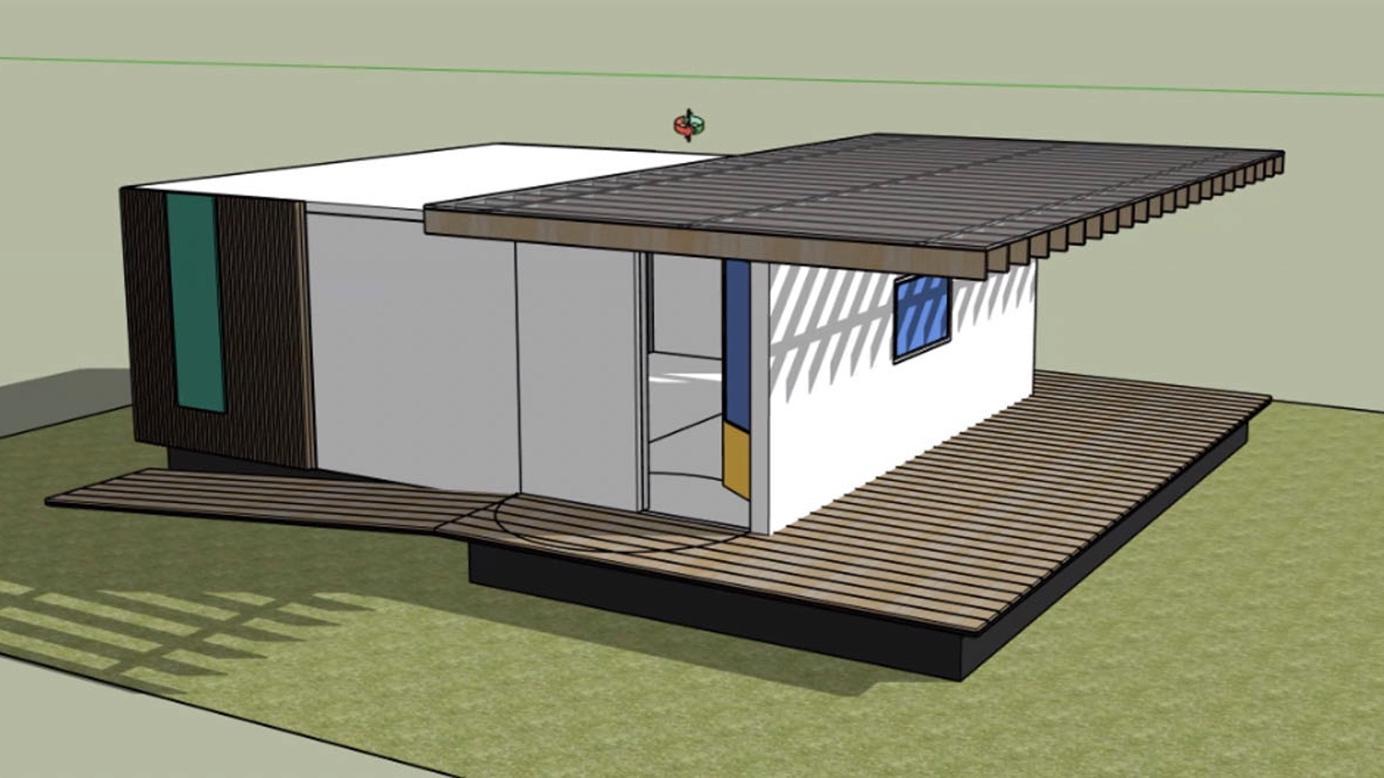
Initial 3D model of the CoGhent Box (photo credit: CoGhent projects)
The CoGhent project started with the hypothesis of “[…]a high tech mobile experience room that will traverse three neighbourhoods […]”. The Covid-19 lockdown prevent to challenge this initial hypothesis, hitting the project process in 2 ways: blocking experimentation work with users foreseen in the neighbourhoods on the one hand and, on the other hand leaving the project team locked at home with no other options than developing the conceptual framework and then the IT technology with low interaction and feedback from the user side.
PvK - ”At the start of the software development because of Covid-19, it took us a while to collect the right feedback from the citizens in the neighbourhoods. We were missing the connections between the development team and the neighbourhood workers using the software. After the Covid-19 period, we finally could show what had been developed to the people of the neighbourhood and start collecting all that feedback which we would have hoped to have earlier”.
TECH-DRIVEN VERSUS USER-DRIVEN?
This classical discrepancy between technical solution development and user research has been aggravated by the Covid-19 but seemed to be coming also from the very project setting.
PvK - “I consider my main contribution to the initiative to bring closer together the development team with the neighbourhood workers: it took a long time for everyone to speak the same language. Some feedback from the neighbourhood workers came only at later stages of the project and had to be implemented long after the deadline. The setting of the co-creation process needed continuous care and adjustments in this project”.
The partners in the CoGhent project constitute 2 different skill groups: those focused on technology and those focused on neighbourhood social cohesion.
PvK – “The most interesting part for me was to see the interactions between the people working in the neighbourhoods and the people developing the software for the city cultural institutions interested in cultural heritage. The people working in the neighbourhoods were a smaller group. From the technology side, we were a larger group, and we often used a lot of technological words, complex sentences in English. The neighbourhood workers were wondering what we were talking about. The interaction didn’t really take place at the beginning...”
The difference of background culture between the 2 major groups of partners created difficulties in the co-creation process. A lack of shared conceptual designs and early draft models from the design partners seems to have made dialogue difficult especially within the pandemic context.
PvK - “The CoGhent core team was quite technology oriented. They were also all very busy and extremely overloaded at the early days, so they wanted to move on very quickly and the neighbourhood workers had to take 2 steps at the time: getting started with heritage in the neighbourhoods and at the same time thinking about what kind of technology could help. It was difficult for them to give feedback because they had not seen anything else than paper material. In retrospect, these should have been 2 distinct steps”.
Second, a certain misinterpretation of CoGhent Box as a finalised version instead of an in-progress one created early tensions.
PvK - “From the technological side, it was all clear: the Box was a beta version. This was testing and we would improve continuously. At the start, the neighbourhood workers were under the assumption we were close to a final version. After clarifying that we were doing the co-creation while the box was already open to the public, it clarified a lot, and the cooperation ran much smoother: we collected a lot of end-user feedback and improved the software during the last Months the box was travelling through the neighbourhoods.
With the progressive release of the Covid-19 constraint, the co-creation process expected from the beginning of the project arrived late but at least could take place.
PvK - “Co-creation is about collaborating with the different partners involved in this project. In the later phases, the co-creation was more for me about working nicely together with the neighbourhood workers on the field, presenting the Box to the inhabitants and the developers. That was for me the best experience I ever had. I was working for many years in software companies in the past and often developers develop without talking to the end users. In this project, we really brought both together physically in one room. The developers were very young, 20 to 22 years old, just graduated from high school, and the neighbourhood workers were a bit older and the interaction between those two groups was really a nice thing to observe”.
With the delay on the project schedule consequence of the Covid-19, another tension emerged on what to prioritise in the remaining time within the project framework that also blurred the co-creation process.
PvK - “We had some kind of conflict of interest between what we needed to choose first: on the one hand the request to focus on the back end and finalise the Minimal Viable Product for institutions to really make sure that project can continue after 2023 and, on the other end the neighbourhood workers asking for more tools which they can use in the Box to improve social cohesion in neighbourhoods. At the end of the project, we moved into a direction where we really focused on the technology and not on its integration. This was really needed to secure the project continuation after 2023. On the other hand, If you really want to extend this project for the long term, you should indeed develop more simple tools that workers can use to go visit citizens and enable them to have conversations between each other. You don't need complex tools for that”.
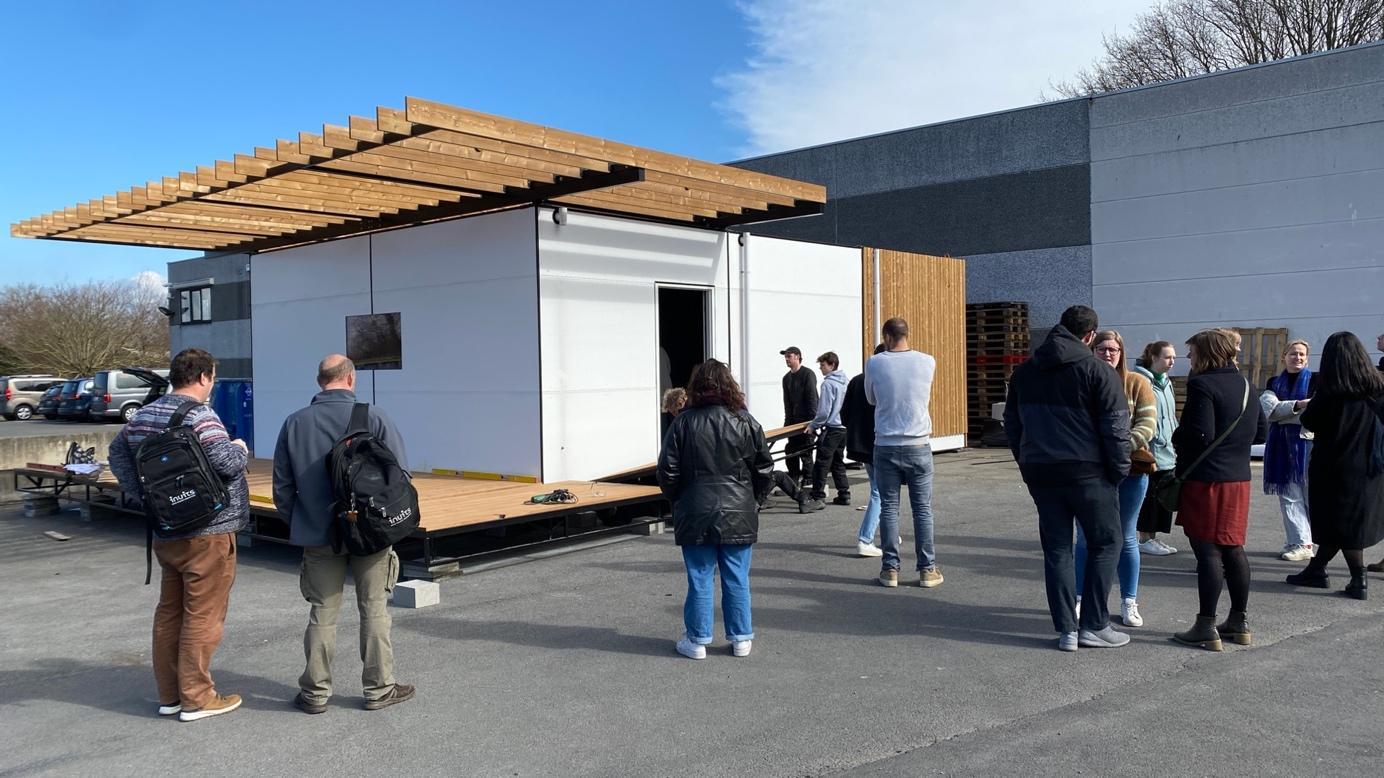
First preview of the CoGhent Box at Fisheye prototyping company (photo credit: François Jégou)
EFFECTS ON SOCIAL COHESION?
The CoGhent Box as the first stage of instantiation of the project seemed to lack of flexibility and potential of evolution to work smoothly as an object of co-creation.
PvK - “Moving the box to a new location was a too big effort. If the goal is really to improve the social cohesion in the neighbourhoods, I believe a box that is more mobile is key. E.g., to bring the collection towards the citizens, you can put the CoGhent technology in a small van and just drive around and really park in front of small events where people are, for example, to a Christmas market and reach people passing by”.
The initial insight of a “mobile experience room” as an inside space revealed to be more a barrier to user involvement rather than an asset to engage participation.
PvK - “If you then look at how the Box is constructed, it's one big box with a lot of nice technology but you need to be able to bring the people inside the box. Knowing what we know today, and of course this is part of all the lessons learned with the project, I would construct the box in a much different way: instead of one big unit, much more smaller units, so that you can travel very fast around the neighbourhoods and bring the Box and its technology to the people and not ask the people to go to the box. For example, instead of having one big box with a big screen, I would rather use tablets and just let the neighbourhood workers take the tablet to the inhabitants and have one-on-one conversations”.
Beyond the shell designed first in the form of the Box, the technology developed within the CoGhent project seems to appear somewhat disconnected at least from the scope of enhancing social cohesion in the city.
PvK - “For me, the most inspiring part of CoGhent is the fact that people can really explore the collections or the museum without visiting the museum physically. The biggest achievement is the fact that all those things are linked to each other with metadata so you can jump from one topic to another topic and really explore and find your way into the collections. […] For example, in the first location where we installed the Box, we saw young teenagers discussing with elderly persons around an image. And that was really striking, but it might be right that they were not talking about the images linked to each other. The conversation was between two people of two different generations in one image. The linked data is nice, but is it really that big added value? Perhaps more for people doing studies and background investigations and not really for the citizens. So, if you think back about the goal of the project to improve social cohesion in the neighbourhoods, you need images, but perhaps you don't need linked images!”
User interface showing visualising the links between objects of the collection (photo credit: François Jégou)
The CoGhent Box first level prototype appears then as a rather heavy artefact and a rigid service emerged with low implications of neighbourhood workers and therefore integrating with difficulties with the aim to “[…] increase the dialogue between citizens of different backgrounds, enhancing social cohesion”.
PvK - How does this technology really make the social cohesion in the city stronger? I'm also quite a critical person looking at this project myself, although I'm on the side of technology. To be honest, I don't believe that technology on its own can ensure social cohesion in the neighbourhoods will improve. You will always need neighbourhood workers in the neighbourhoods to bring people together, to socialise and to talk to them. The technology developed by CoGhent is an enabler. The technology on its own will never achieve this goal”.
BEYOND INTEGRATION IN THE DESIGN MUSEUM?
As written initially in the UIA application: “CoGhent will integrate the result permanently in the future wing of the Design Museum Gent as part of their renewed role as a “third place” […]”
PvK - “I come back to the goal of CoGhent project which is to enhance cultural participatory practice via open data and disruptive technology, to gather citizen stories and citizen history to increase social cohesion and I wonder if citizens’ participation will not be limited to visitors of the Design Museum in the centre of the city?”.
Beyond the potential of upscaling of the technology developed by the project for cultural institutions in Europe and the management of their collections, the follow-up challenge is also to give operational feedback to the appetite raised by CoGhent in the city’s neighbourhoods where its co-creation took place.
PvK - “Next to this integration in the Design Museum, I would love to see this technology being for instance integrated in a device like a tablet or a small car to drive around and to make sure that this will stay alive and be utilised by the neighbourhood workers to actively encourage inhabitants to add new objects from their culture, to leave comments, to look at each other stories… as an enabler to improve social cohesion”.
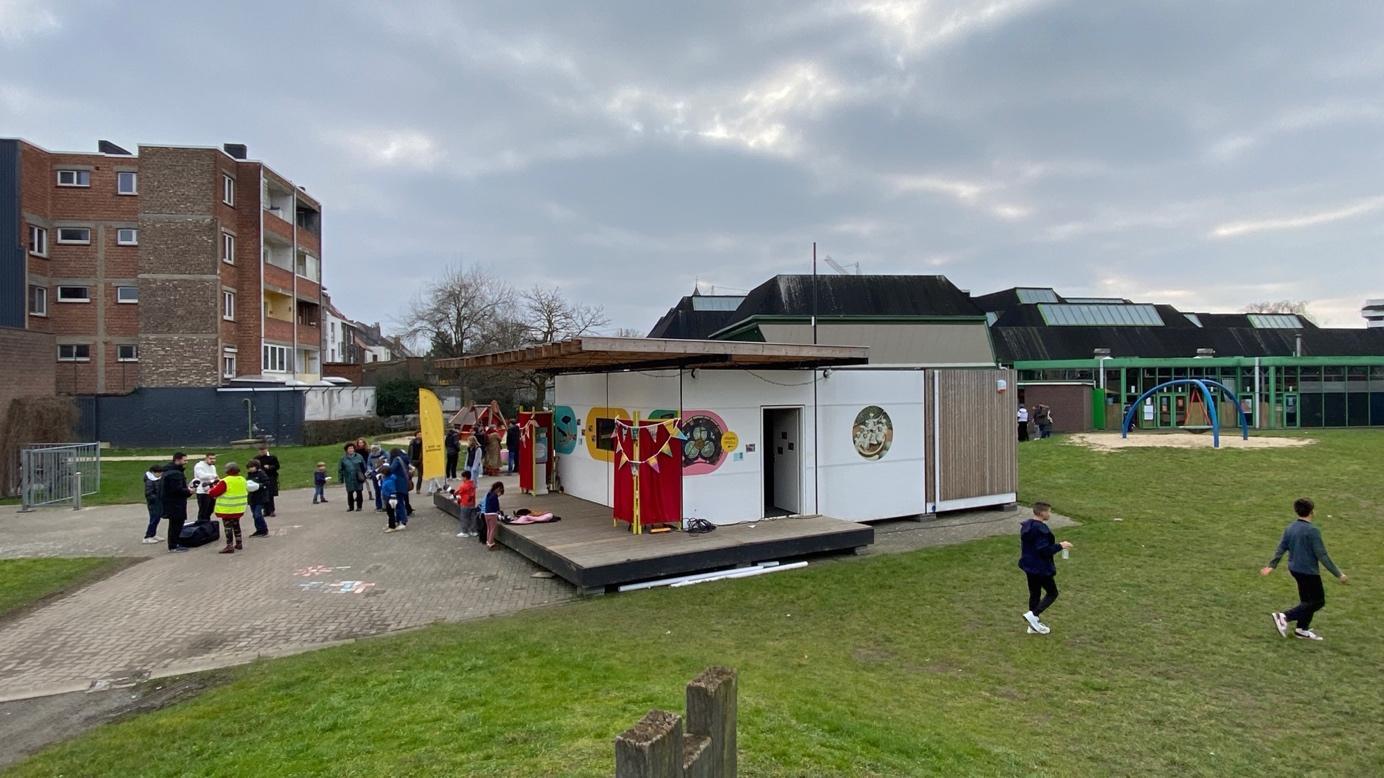
Last day of the installation of the CoGhent Box in Sluizeken-Tolhuis-Ham neighbourhood (photo credit: François Jégou)
A FUND FOR A SECOND STAGE OF CO-CREATION
The in-depth analysis of the effects of the installation of the CoGhent Box in 3 city neighbourhoods is taking place now and will discuss and enrich these first impressions. But as Pieter-Jan Pauwels, one of the 2 initiators and CoGhent project leads said: "The CoGhent Box is only the first iteration of the project's applications. The Co-creation Fund will show how new applications based on the technology developed within the CoGhent project can emerge”.
SD - “The Co-creation Fund is a grant program offered by the CoGhent project to citizens, companies and artists who want to reuse the digital collections. Even though its main purpose was to create use-cases for applications using linked data, we wanted to make sure that the grant program would also be accessible to people with other skill sets. That is why we created a grant program for what we called “creative projects” which reuse the digital collections which were made available through the Cogent portal with its intuitive visual interface. For the linked open data use cases, we created a second grant program for what we called “technological projects” for which the requirement was that the project had to make use of the digital infrastructure (namely the linked data event stream endpoint) which is built for developers.
SUPPORTING CONSISTENT OUTPUTS
A core idea behind the Co-creation Fund is that the innovation process is not a matter of instant ideation but requires investment of time and budget.
SD - “Why are we doing this? CoGhent is an open data project. A lot of the open data discourse and open data projects simply assume that developers and the cultural industries will somehow naturally pick up on this content and do interesting stuff with it the moment you make it available. This is very naive and moreover artists or little start-ups or companies are often asked to do things for free all the time by the cultural sector. The Co-creation Fund wants to address this problem and provides funding to allow them to work on something for half a year or a year. This allows them to go beyond just the ideation or prototyping stage which is usually the outcome of for instance a hackathon, the most common format for co-creation.
Furthermore, providing consistent support to reusers of your data infrastructure is necessary to get good results.
SD - “The funding from the Urban Innovation Action grant did not only allow us to provide funding to reusers. We also made sure that the people working on the Co-creation Fund projects would get adequate support while working on their application. This also takes time and therefore money. For us a key takeaway of the project is that if for instance the government wants to put in place an open data policy to promote reuse of digital collections, then it should not only incentivise it in the form of grants but also provide technical support to reusers”.
CO-CREATION FOR THE USE OF LINKED DATA EVENT STREAMS TECHNOLOGY
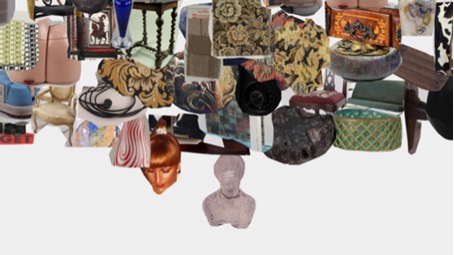
« Collage van Gent - Ctrl Alt vzw » project selected by the CoGhent Co-creation Fund proposing a participatory collage of elements coming from Ghent’s collections (photo credit: Collage van Gent - Ctrl Alt vzw)
Co-creation Fund projects provide use-cases for linked data technology in the heritage sector.
SD - “A lot of the projects that were selected make use of the data in a fun and interesting, sometimes unexpected way. But some applications really realise the potential of linked data event stream technology in the sense of combining open data sources from different sectors. The project “Linked Arteveldestad” involved creating a navigation app that combines data from the collections with points of interest in the city combined with other open datasets, such as mobility data from Openstreetmap. The idea is that based on your personal preferences, this app gives you a route that sends you to a museum, a point of interest, etc”. This is a good example that really makes use of what linked data technology has to offer.
Because the application works based on queries according to a specific curatorial angle, the user gets the feeling that he or she is connected personally with historical heritage.
SD - “The promise of linked data for me is that objects in museums’ collections are connected with other collections, with the built environment we inhabit every day and ultimately to our daily life. Collections relate to our daily lives and environment around us: paintings, architectural design drawings, etc. may be linked to a certain place they depict, with a street name, with a historical person, a colour, a concept, etc. We hope that leading people towards collections in a personalised way, will make people take notice of and learn about their environment”.
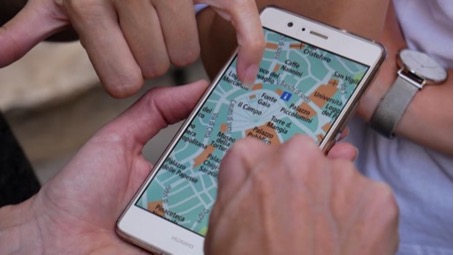
« Linked ARTeveldestad - IMEC / IDLab vzw » project selected by the CoGhent Co-creation Fund combines data from the collections with points of interest in the city on a map attracting users to the Ghent cultural institutions (photo credit: Linked ARTeveldestad - IMEC / IDLab vzw)
One of the novel features of the linked data event streams technology is that it logs changes in the descriptive data of heritage collections and provides access to up-to-date data to all applications reusing it.
SD - “One thinks of heritage data as unchanging, but this is not always true, for instance the title of a work may be altered. Linked data event streams publishes the up-to-date data, if an artwork’s title is revised, it will automatically be updated and it will be published up to date by all applications that run on the infrastructure, including this one. If for instance a museum intends to decolonize their collection by revising artwork titles that refer to people of African heritage with derogatory language than the updated data will be featured on all applications such as a collections portal serving the wider public, researchers however will also be able to look through the original revised data which could be interesting from a historical perspective”.
CREATIVE TECHIE REUSE OF THE COLLECTIONS
Some examples of creative reuse by Co-creation Fund projects.
SD - “Mesh vzw / Open Design Course” was a project by a graphic designer who has created stylized drawings and colour schemes based on objects from the collection, and afterwards he gave workshops in design schools where the idea was that students make new derivative works reusing patterns from the collections.
Another project “1000 yaar Gentse koop” (1000 years of buying locally) was developed by an organisation that promotes local businesses. Their project involved the making of mini pop-up exhibitions in buildings that used to house businesses that are no longer there. Some others are based on storytelling like “Schroot Hoop”. It's a word joke that means both “trash heap” and trash “hope”: they saved objects which were deposited at the city dump, recorded the story about these objects and tried to relate them to objects in the Design Museum of Ghent…”
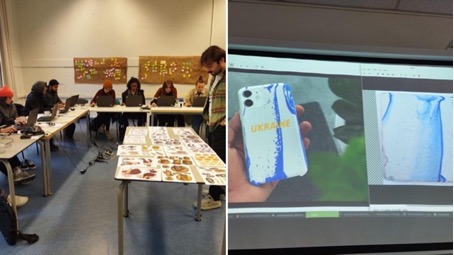
« Re-use it - Mesh vzw / Open Design Course » project selected by the CoGhent Co-creation Fund organizing design workshops based on reinterpretation of collections patterns (photo credit: Re-use it - Mesh vzw / Open Design Course)
On top of the Co-creation Fund process, CoGhent organised a short hackathon creative format to engage reuse of the collection and of the related technological infrastructure.
SD - “We had more than 130 people participating in our hackathon. It was more focused on the ideation process but there were some projects that finished with a functioning application. For instance, one technical application used artificial intelligence image recognition and was fully functional at the end of the hackathon itself; one was an augmented reality app designed as an add-on to the giant map of the city of Ghent presented at the STAM museums. Another one was a proposal to provide access to the collection to blind people”.
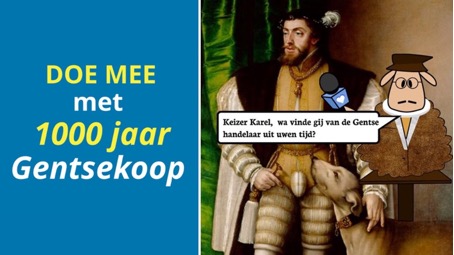
« 1000 jaar Gentse koop - Gentsekoop » project selected by the CoGhent Co-creation Fund focusing revival of former commercial businesses (photo credit: 000 jaar Gentse koop - Gentsekoop)
Together, the Co-creation Fund and the Hackathon generated more than 50 ideas to reuse digital collections, projects were proposed.
SD - “The people submitted projects in fields they were already working in or approaches or techniques they were already familiar with: if somebody was making podcasts, they proposed a podcast project but of course adapted to what we wanted to see. We communicated in our local network: the hackathon “Apps for Ghent” for instance. It's a community that exists in Ghent for many years now and it's like a community of very small-scale developers and researchers. They do artistic techie projects rather than something that is purely commercial. And that’s also something that we were looking for”.
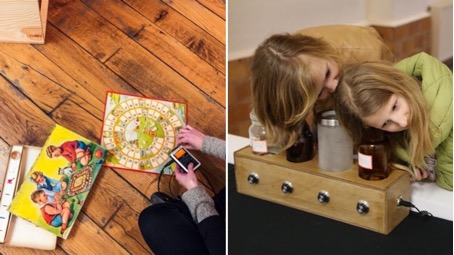
« Schroot / hoop - De Zieke Steur, aifoon, Relaas » project selected by the CoGhent Co-creation Fund focussing objects saved from the city dump and connecting them to objects in Ghent’s collections (photo credit: Huis van Alijn 2, Michiel Devijver (right) Poëzie van de industrie, Karolien Deman (left)
The Co-creation Fund and feedback from the selected projects allows theCoGhent project team to evaluate whether the linked data event streams technology put in place during the project is valued by developers.
SD - “For instance, Collage van Gent is one application that will make a participatory collage of the collections. Their problem was that loading in the high-quality images was too slow. So, their solution was to download the images locally on their own server but in doing so, they were no longer making use of the up-to-date data which the linked data streams technology provides. The whole idea behind the linked data event stream is that you can get an updated version of the new data every day. This led to a conversation with the developers about the value of the linked data event streams technology but also the added complexity it entails. The Co-creation Fund process acts as a validation tool for the project to see if the functionalities of the infrastructure we put in place are valued by developers or not”.
WHAT’S NEXT?
What’s next at this stage? We need to wait for in-depth analysis of the co-creation process based on the experimentation of the CoGhent Box on the one hand and, on the other hand, on the results produced by the Co-creation Fund.
What did these 2 stages of co-creation effectively demonstrate? What are the lessons learned from the tour in the 3 neighbourhoods despite the pandemic conditions and the lack of experimental flexibility of the Box design?
Are the 13 projects selected by the Co-creation Fund: 8 in the creative category and 5 technical ones showing effective uses of linked data event stream technology or not? Did the external developers and cultural creatives invited to reuse the Collections of Ghent demonstrate convincing reuse of digitised cultural data?
It will also be interesting to learn from post-analysis work and debates open questions emerging from the exchanges of views reported in this article:
Does the initial project's intention to enable visitors to “[…] choose to participate by adding personal stories to enrich the shared cultural heritage of Ghent […]” allowed the effective emergence of a so-called 6th collection, a sort of 6th crowdsourced stream feeding Ghent’s cultural institutions’ collections?
Why did the Co-creation Fund foresee 2 categories of « creative projects » and of « technological projects » without targeting the social cohesion goal of the project?
What are the potential impacts of CoGhent in connecting inhabitants from different parts of the city through digitised cultural data?
About this resource
The Urban Innovative Actions (UIA) is a European Union initiative that provided funding to urban areas across Europe to test new and unproven solutions to urban challenges. The initiative had a total ERDF budget of €372 million for 2014-2020.
Similar content


